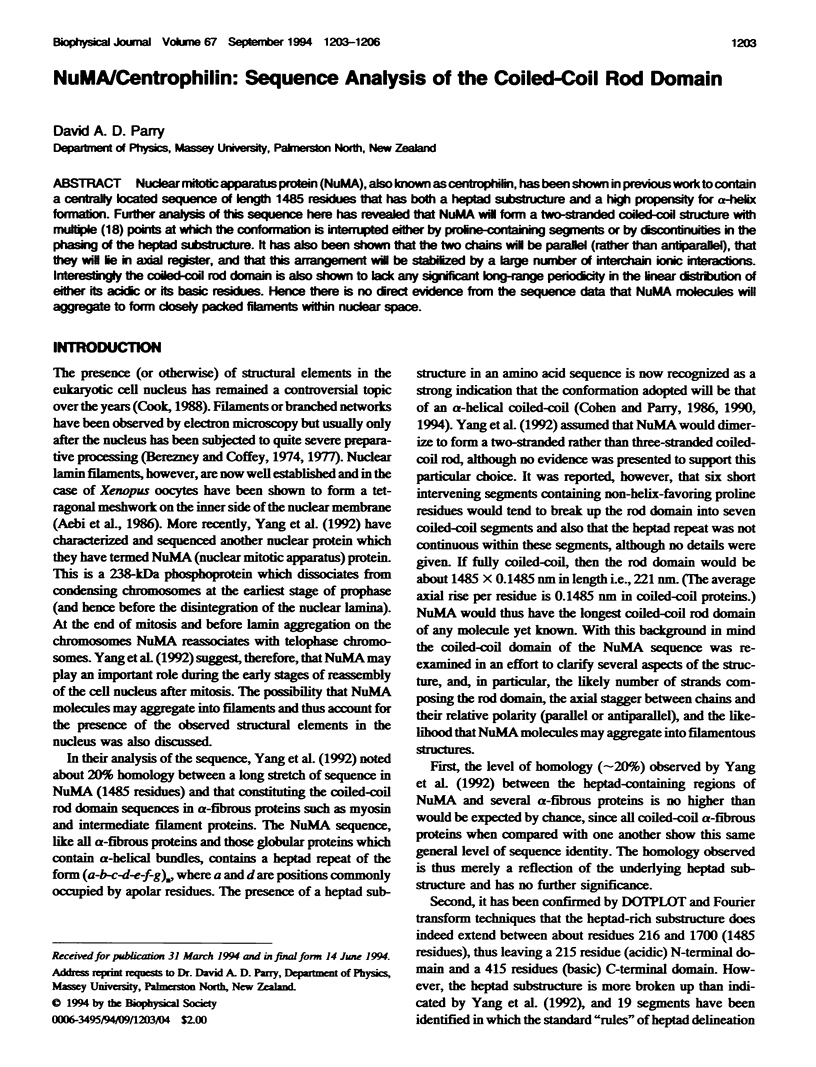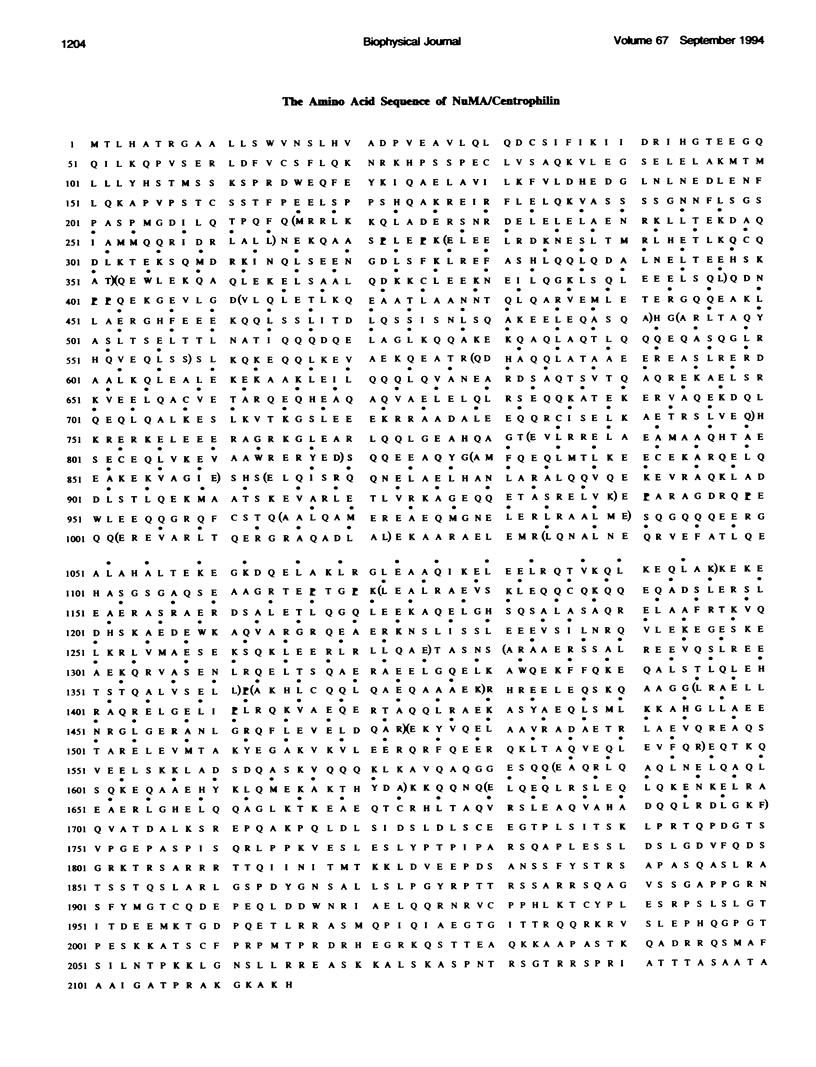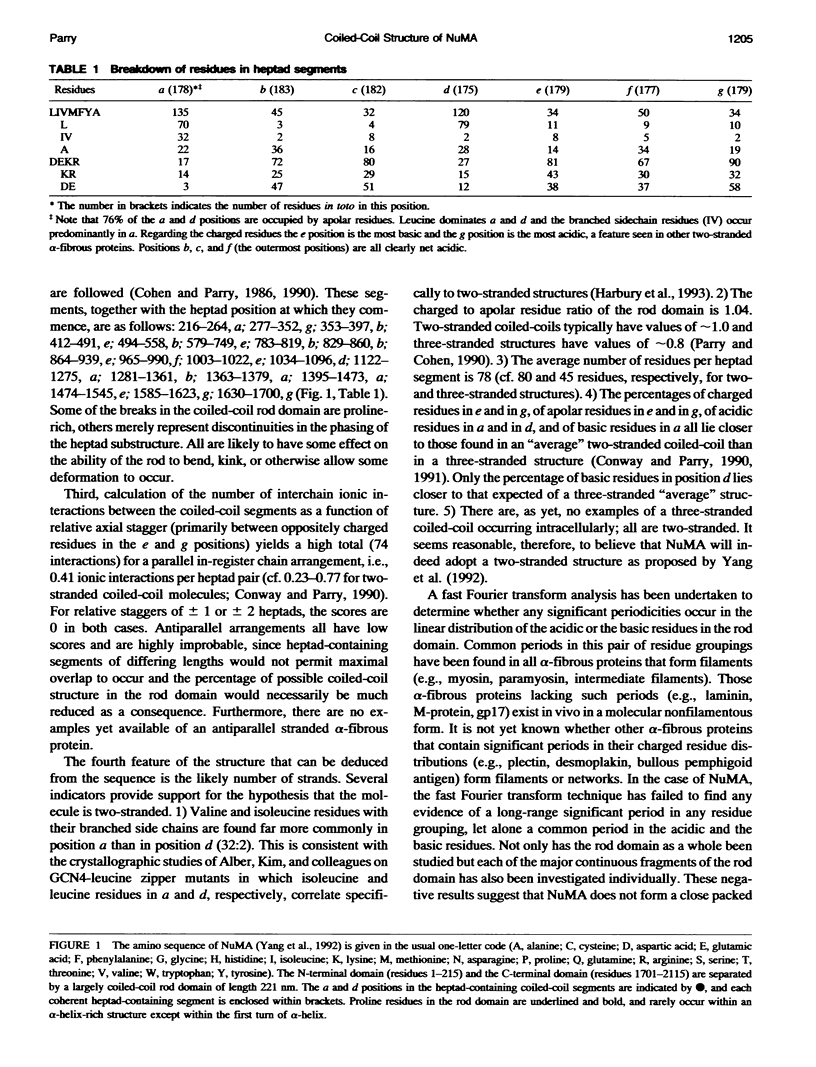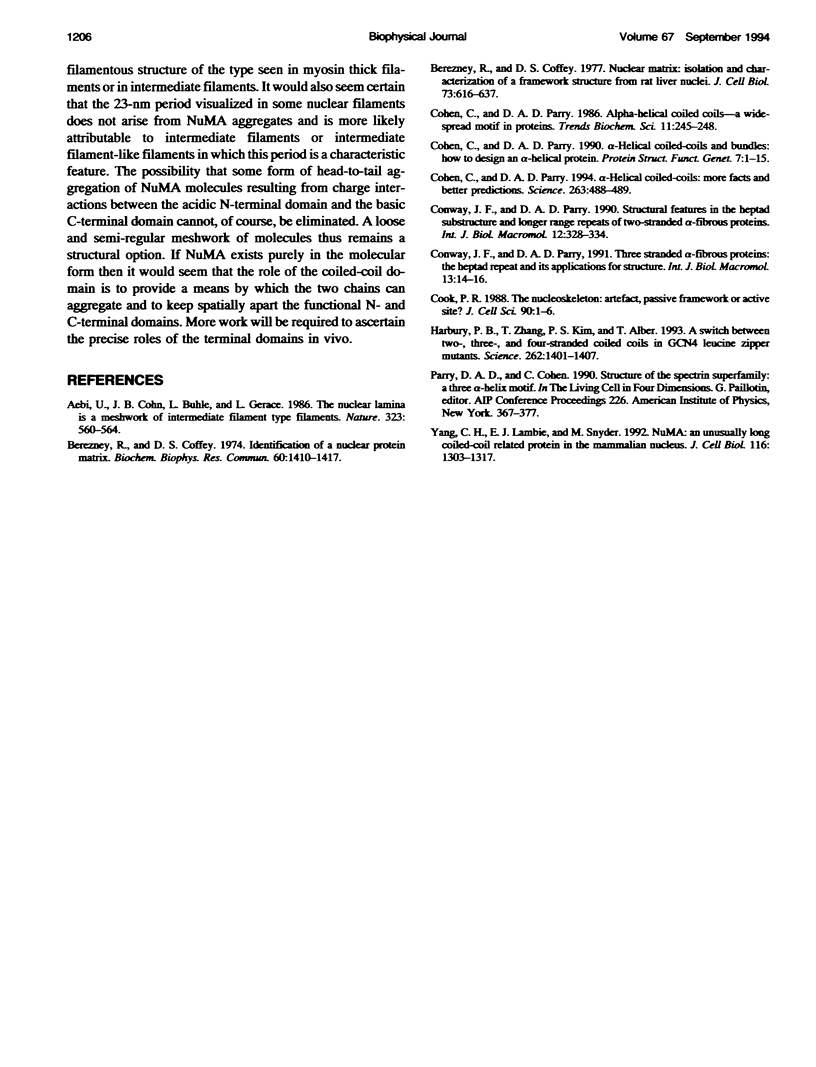Abstract
Nuclear mitotic apparatus protein (NuMA), also known as centrophilin, has been shown in previous work to contain a centrally located sequence of length 1485 residues that has both a heptad substructure and a high propensity for alpha-helix formation. Further analysis of this sequence here has revealed that NuMA will form a two-stranded coiled-coil structure with multiple (18) points at which the conformation is interrupted either by proline-containing segments or by discontinuities in the phasing of the heptad substructure. It has also been shown that the two chains will be parallel (rather than antiparallel), that they will lie in axial register, and that this arrangement will be stabilized by a large number of interchain ionic interactions. Interestingly the coiled-coil rod domain is also shown to lack any significant long-range periodicity in the linear distribution of either its acidic or its basic residues. Hence there is no direct evidence from the sequence data that NuMA molecules will aggregate to form closely packed filaments within nuclear space.
Full text
PDF



Selected References
These references are in PubMed. This may not be the complete list of references from this article.
- Aebi U., Cohn J., Buhle L., Gerace L. The nuclear lamina is a meshwork of intermediate-type filaments. Nature. 1986 Oct 9;323(6088):560–564. doi: 10.1038/323560a0. [DOI] [PubMed] [Google Scholar]
- Berezney R., Coffey D. S. Identification of a nuclear protein matrix. Biochem Biophys Res Commun. 1974 Oct 23;60(4):1410–1417. doi: 10.1016/0006-291x(74)90355-6. [DOI] [PubMed] [Google Scholar]
- Berezney R., Coffey D. S. Nuclear matrix. Isolation and characterization of a framework structure from rat liver nuclei. J Cell Biol. 1977 Jun;73(3):616–637. doi: 10.1083/jcb.73.3.616. [DOI] [PMC free article] [PubMed] [Google Scholar]
- Cohen C., Parry D. A. Alpha-helical coiled coils and bundles: how to design an alpha-helical protein. Proteins. 1990;7(1):1–15. doi: 10.1002/prot.340070102. [DOI] [PubMed] [Google Scholar]
- Cohen C., Parry D. A. Alpha-helical coiled coils: more facts and better predictions. Science. 1994 Jan 28;263(5146):488–489. doi: 10.1126/science.8290957. [DOI] [PubMed] [Google Scholar]
- Conway J. F., Parry D. A. Structural features in the heptad substructure and longer range repeats of two-stranded alpha-fibrous proteins. Int J Biol Macromol. 1990 Oct;12(5):328–334. doi: 10.1016/0141-8130(90)90023-4. [DOI] [PubMed] [Google Scholar]
- Conway J. F., Parry D. A. Three-stranded alpha-fibrous proteins: the heptad repeat and its implications for structure. Int J Biol Macromol. 1991 Feb;13(1):14–16. doi: 10.1016/0141-8130(91)90004-e. [DOI] [PubMed] [Google Scholar]
- Cook P. R. The nucleoskeleton: artefact, passive framework or active site? J Cell Sci. 1988 May;90(Pt 1):1–6. doi: 10.1242/jcs.90.1.1. [DOI] [PubMed] [Google Scholar]
- Harbury P. B., Zhang T., Kim P. S., Alber T. A switch between two-, three-, and four-stranded coiled coils in GCN4 leucine zipper mutants. Science. 1993 Nov 26;262(5138):1401–1407. doi: 10.1126/science.8248779. [DOI] [PubMed] [Google Scholar]
- Yang C. H., Lambie E. J., Snyder M. NuMA: an unusually long coiled-coil related protein in the mammalian nucleus. J Cell Biol. 1992 Mar;116(6):1303–1317. doi: 10.1083/jcb.116.6.1303. [DOI] [PMC free article] [PubMed] [Google Scholar]


